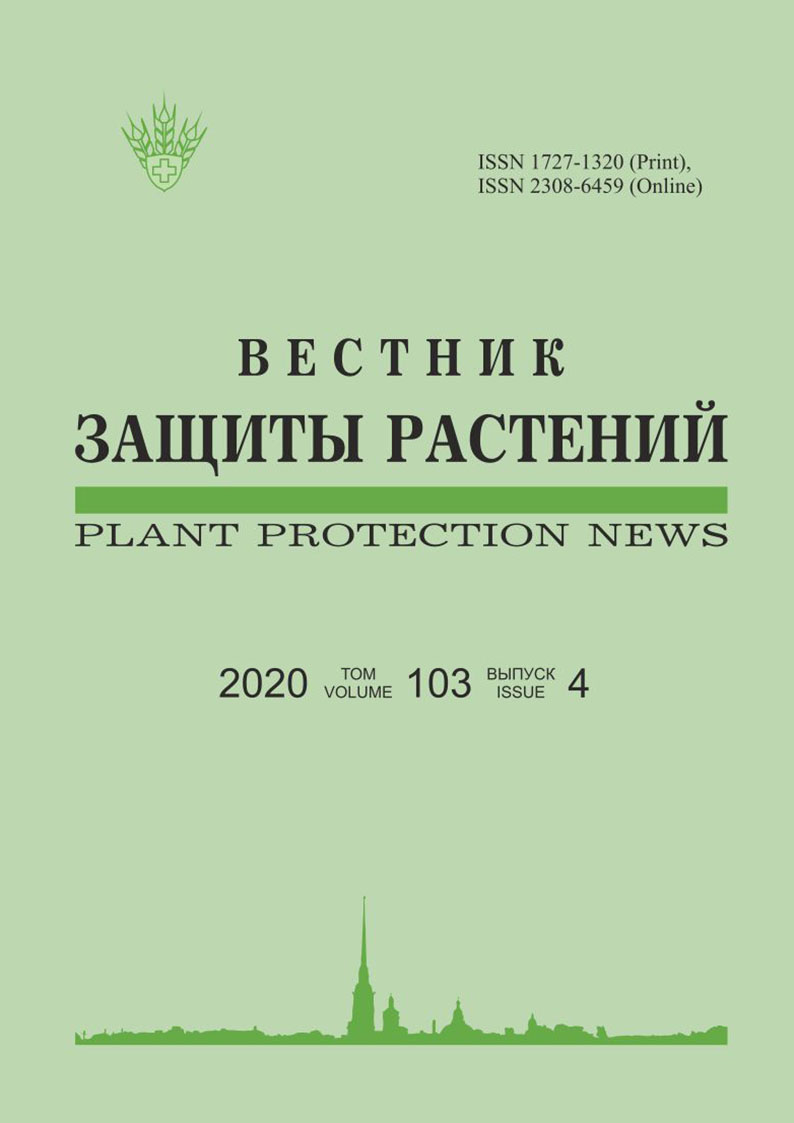Peculiarities of action and retrospective analysis of fungicides efficacy for protection of soft winter wheat against leaf diseases
Keywords:
winter wheat, Septoria leaf blotch, powdery mildew, fungicides, biological efficacy, active compound, chemical class, mode of actionAbstract
The data on the efficacy of 40 fungicides for protection of soft winter wheat against leaf diseases during 2010–2019 are demonstrated. Biological efficacy is calculated based upon the area under the curve of disease development. Biological and economical efficacy of those compounds has been analyzed depending on the number of components, as well as chemical classes of active agents in those compounds. The highest biological efficacy of one-component fungicides against powdery mildew has been recorded for those containing proquinazid, tebuconazole and metrafenone – 69.9–79.3 %. Among 23 two-component fungicides the higher efficacy (82.1–84.3 %) against powdery mildew has been recorded for the fungicides containing azole combined with morpholine. Biological efficacy against Septoria leaf blotch has varied from 64.7 to 88.0 % depending on fungicide composition. Among three-component fungicides the efficacy against powdery mildew has varied from 59.5 to 82.8 %, and against Septoria leaf blotch it has varied from 59.8 to 89.9 %. As a result of the diseases severity decrease due to the fungicide application the saved yield has reached 9.9 centner of grain per hectare.



